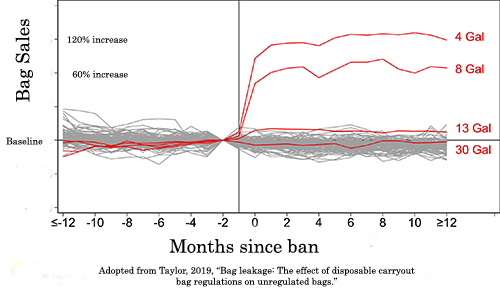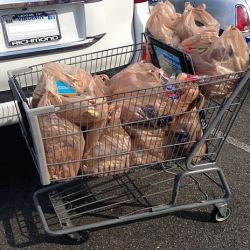“Ben, I just want to say one word to you, just one word. Are you listening? Plastics”
A lot has changed in the sixty years since those cinematic words were expressed in Goodbye Columbus. The financial efficacy of a cheap material has given way to environmental concerns, after all, much of plastic is eternal, like love or herpes. It currently costs five cents for a plastic bag at my grocery store, but New York has declared them non-Grata, and they will be joining plastic straws and other one-time plastic utensils in oblivion. Luckily, biodegradables are available. But perhaps that is not really the case; a new study takes a more scientific look at what we are being sold.
Biodegradation
The long polymer chains that constitute biodegradable materials are first broken down into smaller “bites,” by physical forces like sunlight, water or oxygen, and by degradation by our microbial brethren. These smaller pieces are subsequently assimilated by other microorganisms. In some instances accelerates to the process, pro-oxidants, to accelerate the decomposition. Compostable plastics, when placed in conditions of increased heat and aeration breakdown into nutrients that can enhance our soil. In each case, these definitions have regulated standards to complete the dust to dust scenarios. The researchers wanted to look at the applicable timeframes.
The Study
They compared five different bags, two with those accelerants, oxo-biodegradable, one biodegradable, one compostable, and one regular bag, the kind I paid a nickel to use. The acquire 15 of each type from various stores in the UK. Whole bags along with strips of each bag were then exposed to four conditions, the open air, buried in soil, submerged in seawater, or a blacked-out box in the laboratory (the control); they were evaluated over three years.
- The regular bags were unchanged in both the control and soil conditions after 27 months.
- In the marine conditions, all bags were covered with a biofilm of bacteria, but only the compostable was gone after roughly nine months.
- In the open air conditions, all of the bags had disintegrated into microplastics.
- While the strength of the bags all declined over time, all three of the biodegradable bags and the regular plastic bag were capable of holding 5 pounds of groceries. The compostable bag after 27 months could hold no weight at all
All of the bags showed some degree of degradation, varying with their composition and where they were placed. But with the exception of the compostable bags, they were not close to having become “dust.” As the authors write, “Designing products specifically to degrade in the environment is very challenging because of the natural variability between environment types, as illustrated by the present study.”
The Recycling “Crisis” comes to the fore
For many years, China was the final home of our recyclables, but with its new initiative, National Sword, they require recyclables to be uncontaminated with dirt or other objects. Our recyclables need a new home. [1] We may believe we are recycling, but more and more of those recyclables wind up in landfills.
If we have learned nothing from our war on tobacco and sugary beverages, banning or taxing one item often results in another thing taking its place; Juul for cigarettes and juice for sugary drinks. Has anything substituted for those plastic bags? In another study of bag use in California [2], banning those plastic bags eliminated 40 million pounds of plastic, and at the same time sales of 4 and 8-gallon plastic bags increased by 12 million pounds. Here is a graphic adapted from the article.

And those purchased bags are thicker and less degradable than the ones banned. Additionally, paper bags stepped into the gap; the same author estimates 80 million pounds more paper used as consumers switched from the forbidden to the approved. And paper, while a renewable source, has its environmental costs. Overall, while reducing litter, it does result in net increases in greenhouse gases.
Of course, there is always some sort of reusable cloth bag, and while the estimated number varies, to eliminate the environmental footprint of those fabric bags, they need to be used somewhere between 130 and 20,000 times – that can be a lot of groceries.
If our goal is sustainability, then reuse trumps recycle. But we shouldn’t complacently believe that biodegradable is a given, or that banning plastic is THE answer.
[1] How American Recycling Is Changing After China’s National Sword
[2] First, thanks to NPR’s Planet Money’s Newsletter for pointing the way. Here is the source article Bag leakage: The effect of disposable carryout bag regulations on unregulated bags Journal of Environmental Economics and Management DOI: 10.1016/j.jeem.2019.01.001
Source: Environmental Deterioration of Biodegradable, Oxo-biodegradable, Compostable, and Conventional Plastic Carrier Bags in the Sea, Soil, and Open-Air Over 3 years Environmental Science and Technology DOI: 10.1021/acs.est.8b06984

